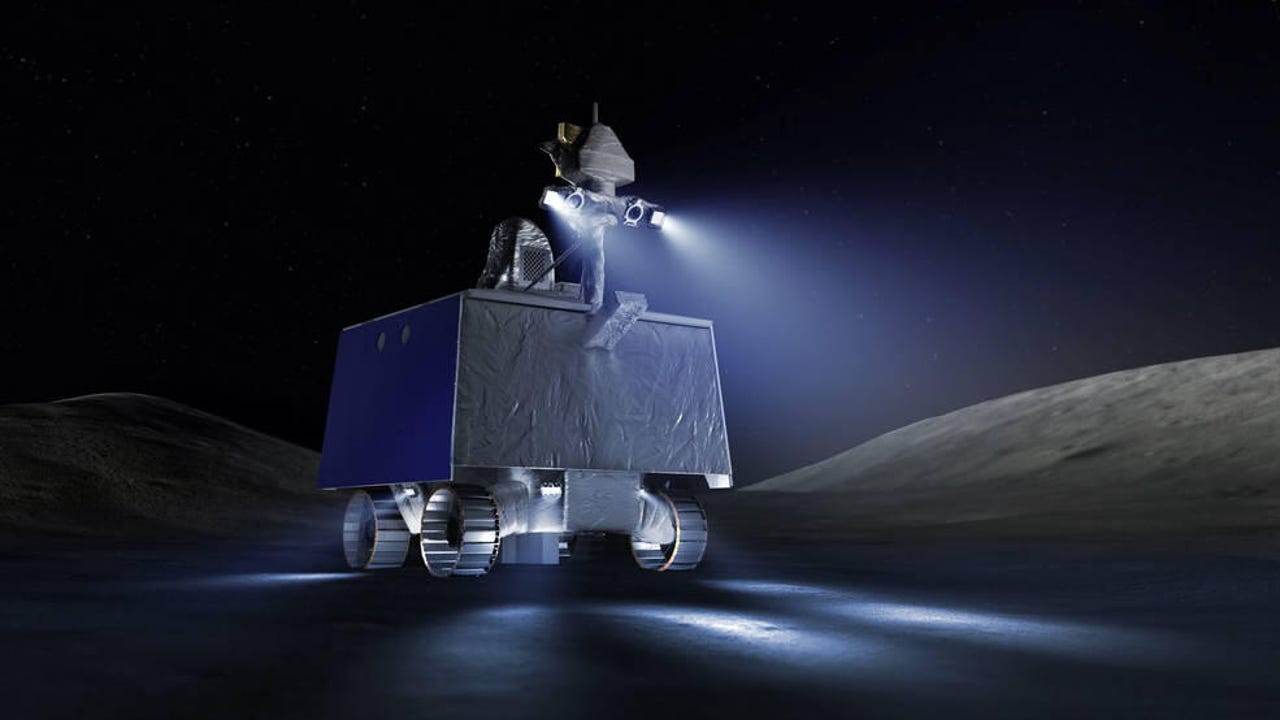
































Illustration of NASA's Volatiles Investigating Polar Exploration Rover (VIPER) on the surface of the Moon.
Image: NASA Ames/Daniel RutterNASA has opted to defer the launch of its Volatiles Investigating Polar Exploration Rover (Viper) until November 2024 to hunt for water that could be used for future human lunar missions.
Viper will scour the moon for the location and concentration of ice that could help deliver the first global water resource maps of the Moon. It will also inform future landing sites for astronaut Artemis missions and help discover where and how water can be harvested.
NASA officials said last year that VIPER would help astronauts "live off the land a little" rather than having to bring up their own supplies. NASA confirmed it found ice on the Moon's South Pole in 2018.
SEE:NASA's tiny satellite is exploring a new Moon orbit
While VIPER was originally scheduled for lunar delivery by Astrobotic in November 2023, NASA has requested the Astrobotic and VIPER mission teams to adjust VIPER's delivery to the Moon's South Pole to November 2024.
The new date defers Viper's water-finding mission by a year and was made after NASA requested US space tech firm Astrobotic conducted more ground tests of its Griffin lunar lander, which will bring VIPER to the Moon.
Astrobotic's Griffin lander was selected in 2020 for the lunar mission through NASA's Commercial Lunar Payload Services (CLPS) program. Private US firms participating in CSLP can bid on delivering payloads for NASA. CLPS is part of NASA's Artemis, its human spaceflight program that plans to achieve a first landing on the lunar south pole by 2025.
NASA awarded Astrobotic's CLPS contract an additional$67.8 million for the extra testing, bringing the Pittsburgh-based firm's total to$320.4 million. NASA awarded Astrobotics$199.5 million in 2020 to deliver VIPER in 2023. Astrobotic is responsible for integration with its Griffin lander, launch from Earth, and landing on the Moon.
NASA says the extra ground testing aims to reduce the risks to the delivery of Viper. Weighing 1,000-pounds, NASA says Viper is its "largest and most sophisticated science payload" in the CLPS.
"Through CLPS, NASA has tasked U.S. companies to perform a very challenging technological feat -to successfully land and operate on the Moon," said Joel Kearns, deputy associate administrator for exploration in NASA's Science Mission Directorate in Washington.
"Viper is NASA's largest and most sophisticated science payload to be delivered to the Moon through CLPS, and we've implemented enhanced lander testing for this particular CLPS surface delivery."
NASA is also exploring nuclear power generation on the moon. As part of Artemis, NASA and the US Department of Energy (DOE) in June selected a few companies to design concepts to bring nuclear power to the moon.
 Etiquetas calientes:
innovación
Espacio espacio
Etiquetas calientes:
innovación
Espacio espacio